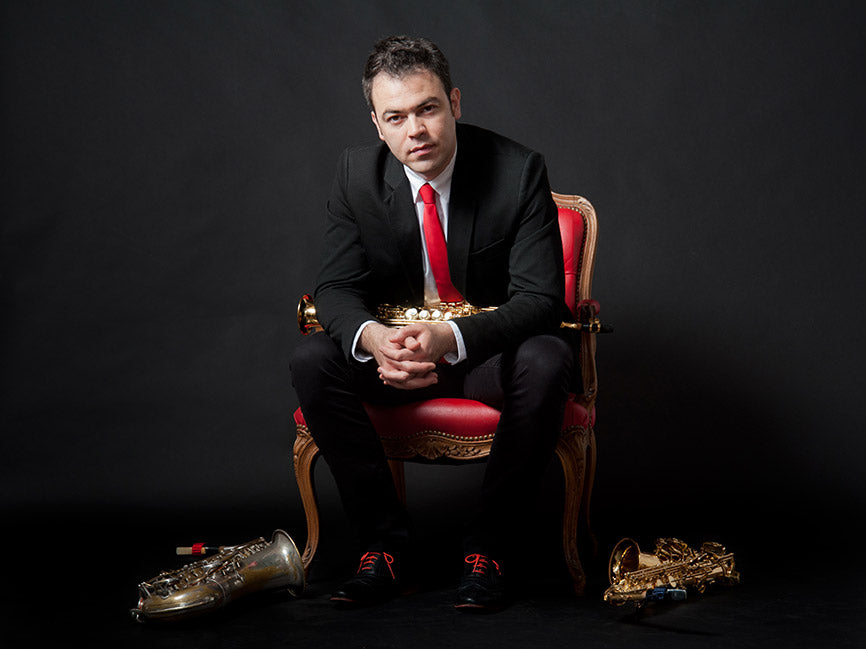Emiliano Barri began studying saxophone at the age of eleven with Diego Maurizi at the Julian Aguirre Conservatory in Banfield. Diego's patience and tenacity sustained him until he had the clear conviction that he really wanted to devote himself to music. Later, the search for new perspectives in the face of the need to find a classical aesthetic led him to study with María Noel Luzardo at the National Conservatory. He also took classes with Arno Bornkamp who became one of his main influences.
In 2005 he formed with friends the 4mil saxophone quartet. With 4mil, he won first prize in two renowned chamber music competitions. The quartet plays regularly in different venues in Argentina, Uruguay and Brazil.
As a soloist, he has played with many orchestras and symphonic formations, both national and international, such as the San Juan Symphony Orchestra; the National Symphony Orchestra of Costa Rica; the Symphony Orchestra of the University of Buenos Aires; the Symphony Orchestra of the Music Office of Curitiba, Brazil; the Bahia Blanca Symphony Orchestra; the Porto Alegre Symphony Orchestra; the "Soloists of Havana" Chamber Orchestra, Cuba and the Symphony Orchestra of the Tatuí Conservatory, Sao Paulo, among others.
He has also performed several times with the Buenos Aires Philharmonic Orchestra, the National Symphony Orchestra and the Orchestra of the Stable of the Colon Theatre, under the direction of masters such as Charles Dutoit, Ira Levin, Gerardo Gandini, Lalo Schifrin and Arturo Diemecke, all of which have been experiences of profound learning and growth.
The practice of teaching is for him as important as that of pure music, as it offers a space for research, experimentation and permanent study, for the observation of certainties and errors, and for constant feedback.
At present, he continues to develop his two passions permanently, since he is part of the Banda Sinfónica de la Ciudad Autónoma de Buenos Aires, being the first solo tenor saxophonist; he continues with 4mil, and he teaches at the IUNA (Instituto Universitario Nacional de Arte) and at the Conservatorio Superior de Música de la Ciudad de Buenos Aires "Astor Piazzolla".
